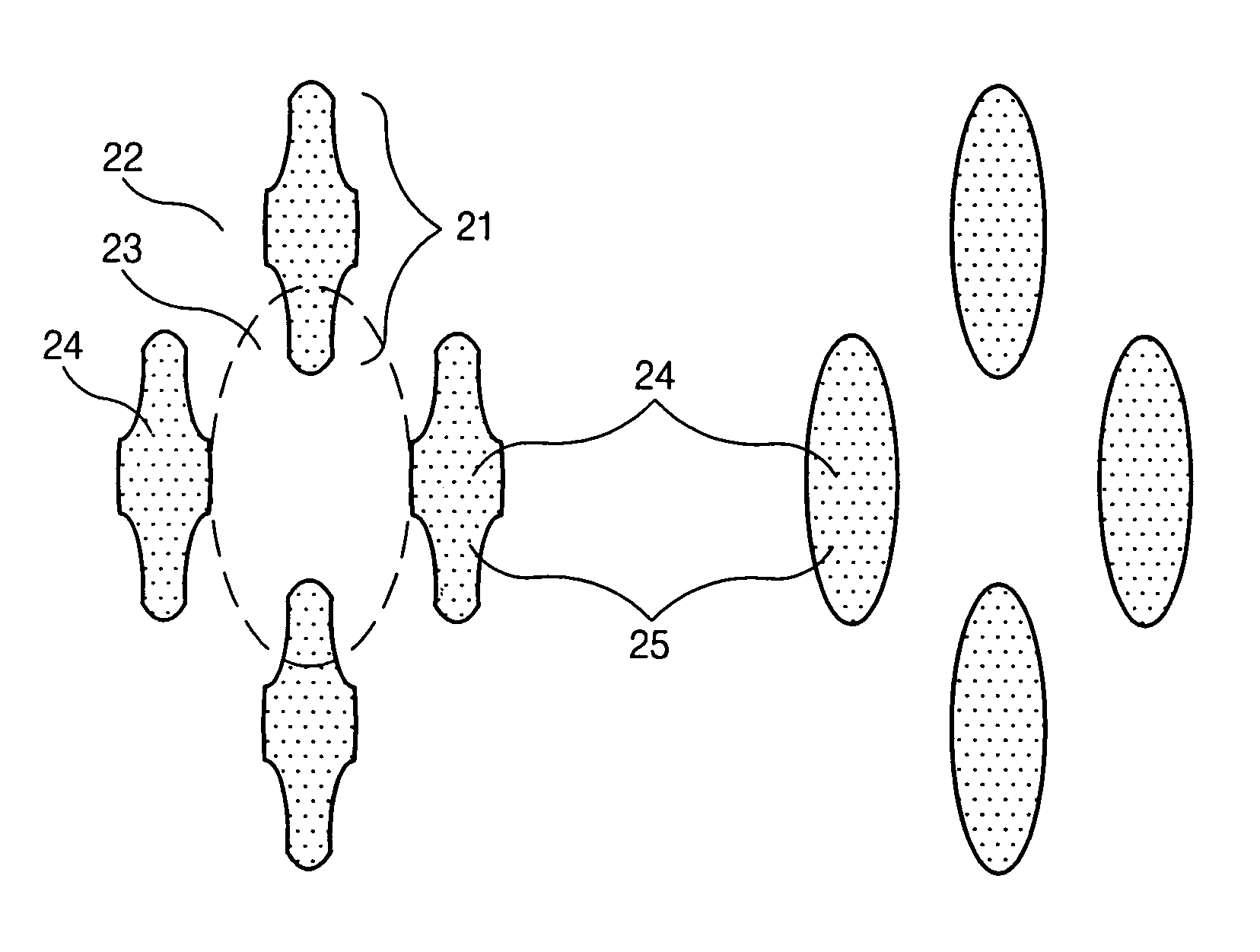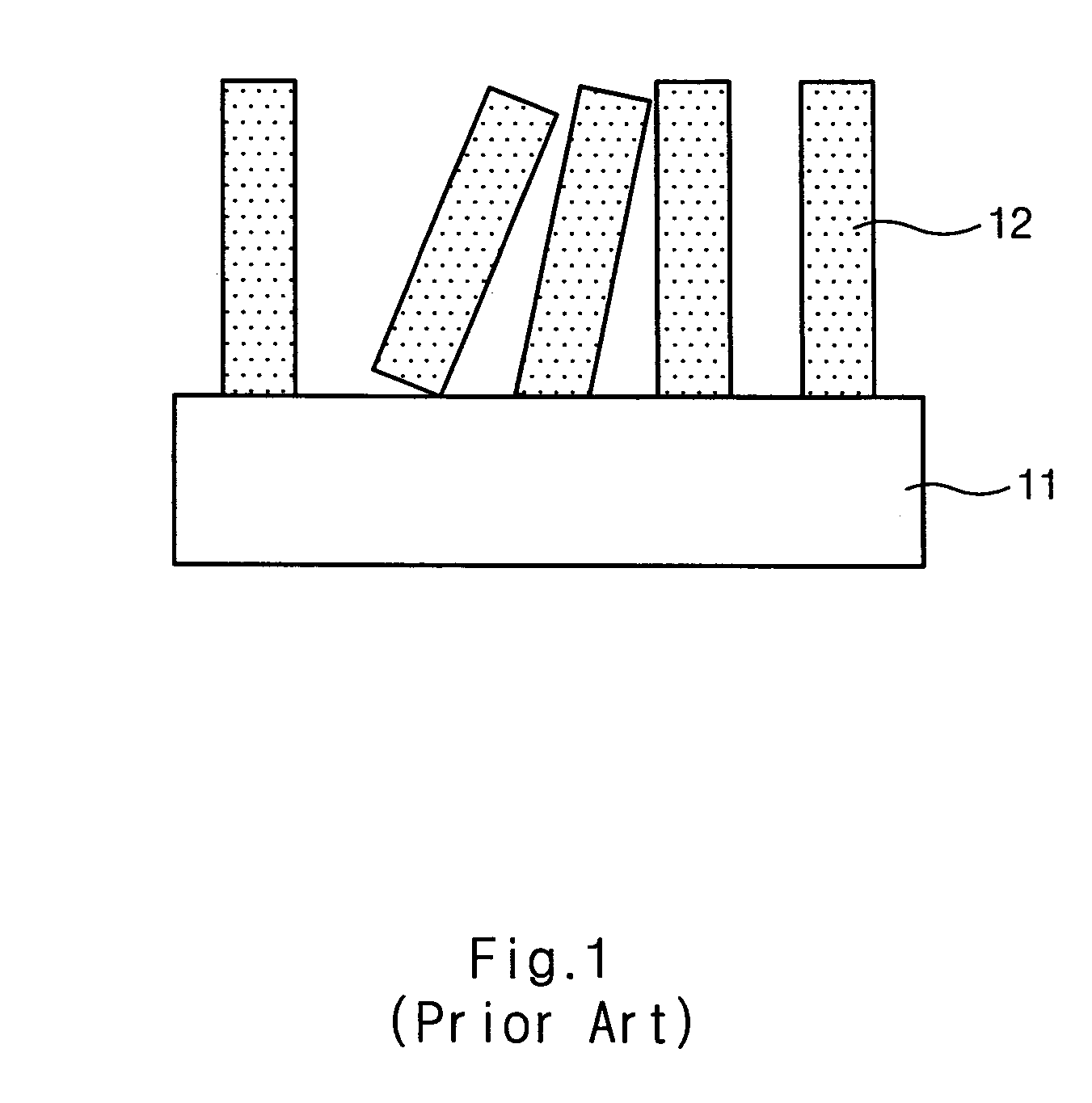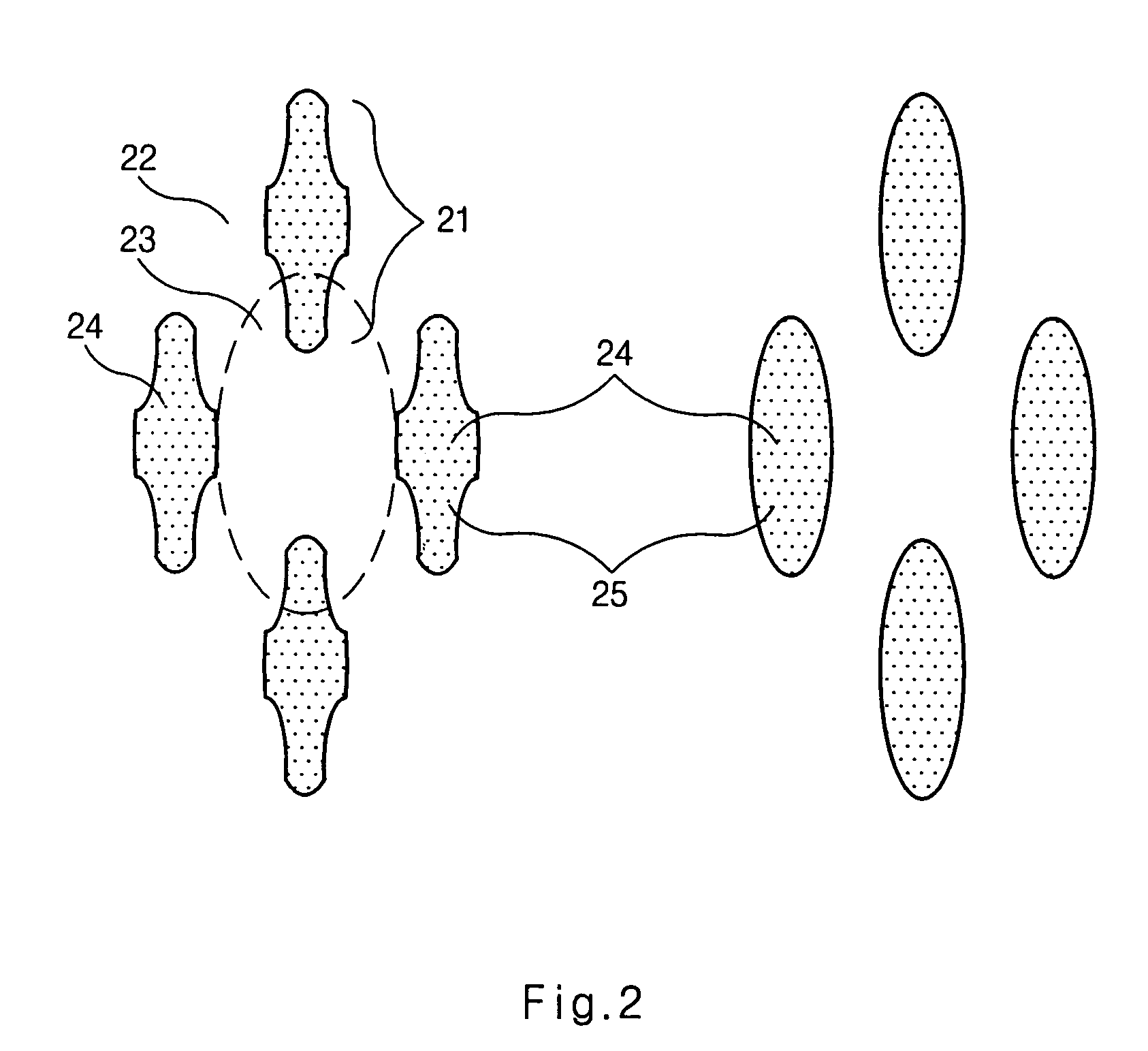Photoresist polymer and photoresist composition containing the same
a technology of photoresist polymer and composition, which is applied in the direction of photosensitive materials, instruments, photomechanical equipment, etc., can solve the problems of not solving the above-described problems, the contact region of the storage electrode receives a relatively large amount of light, and the photoresist materials used in arf photolithography are more difficult to use than conventional photoresist materials, etc., to achieve good etching resistance and improve the profile of the storage electrode contact region
- Summary
- Abstract
- Description
- Claims
- Application Information
AI Technical Summary
Benefits of technology
Problems solved by technology
Method used
Image
Examples
example 1
Preparation of Photoresist Polymer
[0048]To 25 ml of tetrahydrofuran in 100 ml of a round-shaped flask were added 5 g of 3-(trimethoxysilyl)propyl methacrylate, 4 g of t-butyl methacrylate, 3 g of methyl 5-norbornene-2-carboxylate and 3 g of maleic anhydride. Then, 0.13 g of AIBN (azobisisobutyronitrile) as a polymerization initiator was added to the resulting mixture, and reacted at 67° C. under a nitrogen atmosphere for 24 hours. Next, the resulting mixture was cooled at room temperature, and poured into a beaker including 500 ml of ethyl ether to precipitate the resulting mixture. Thereafter, the precipitate was filtered and dehydrated at room temperature, thereby obtaining poly(3-(trimethyoxysilyl)propyl methacrylate / t-butyl methacrylate / methyl 5-norbornene-2-carboxylate / maleic anhydride) having a molecular weight of 1,800 represented by formula 1a (yield: 50%).
example 2
Preparation of Photoresist Composition
[0049]To 50 g of methyl 3-methoxypropionate as an organic solvent were added 10 g of poly(3-(trimethyoxysilyl)propyl methacrylate / t-butyl methacrylate / methyl 5-norbornene-2-carboxylate / maleic anhydride) obtained from Example 1 and 0.1 g of triphenylsulfonium triflate as a photoacid generator. Then, the resulting mixture was filtered through a 0.10 μm filter to obtain a disclosed photoresist composition.
example 3
Formation of Photoresist Patterns
[0050]The photoresist composition obtained from Example 2 was spin-coated on a silicon wafer to form a photoresist film, and soft-baked at 90° C. for 90 seconds. After baking, the photoresist was exposed to light using a KrF laser exposer, and then post-baked at 110° C. for 90 seconds. The baked wafer was developed in 2.38 wt % TMAH aqueous solution for 40 seconds to obtain a L / S pattern of 120 nm.
[0051]As described above, since the disclosed photoresist polymer is less sensitive to change in the amount of energy due to its higher active energy than that of a conventional photoresist polymer, a phenomenon that a pattern of a storage electrode contact region that receives a relatively large amount of light can be improved when a device isolation film pattern is formed, and pattern collapse caused by a high aspect ratio due to high etching resistance can be prevented. Therefore, the disclosed photoresist polymers and the photoresist compositions contai...
PUM
| Property | Measurement | Unit |
|---|---|---|
| temperature | aaaaa | aaaaa |
| temperature | aaaaa | aaaaa |
| aspect ratio | aaaaa | aaaaa |
Abstract
Description
Claims
Application Information
 Login to View More
Login to View More - R&D
- Intellectual Property
- Life Sciences
- Materials
- Tech Scout
- Unparalleled Data Quality
- Higher Quality Content
- 60% Fewer Hallucinations
Browse by: Latest US Patents, China's latest patents, Technical Efficacy Thesaurus, Application Domain, Technology Topic, Popular Technical Reports.
© 2025 PatSnap. All rights reserved.Legal|Privacy policy|Modern Slavery Act Transparency Statement|Sitemap|About US| Contact US: help@patsnap.com



